Scorpionfishes and Rockfishes: Family Scorpaenidae
Species: Scorpaena guttata (Girard, 1854); from the Greek word scorpaena (scorpion, referring to the poison spines), and the Latin word guttata (a form of small drops or spotting).
Alternate Names: Commonly called sculpin although also called scorpionfish, scorpion, little poker, rattlesnake and scorpene. Early records show stingfish and spinefish as favorite appellations. In Mexico they’re called escorpión Californiano.
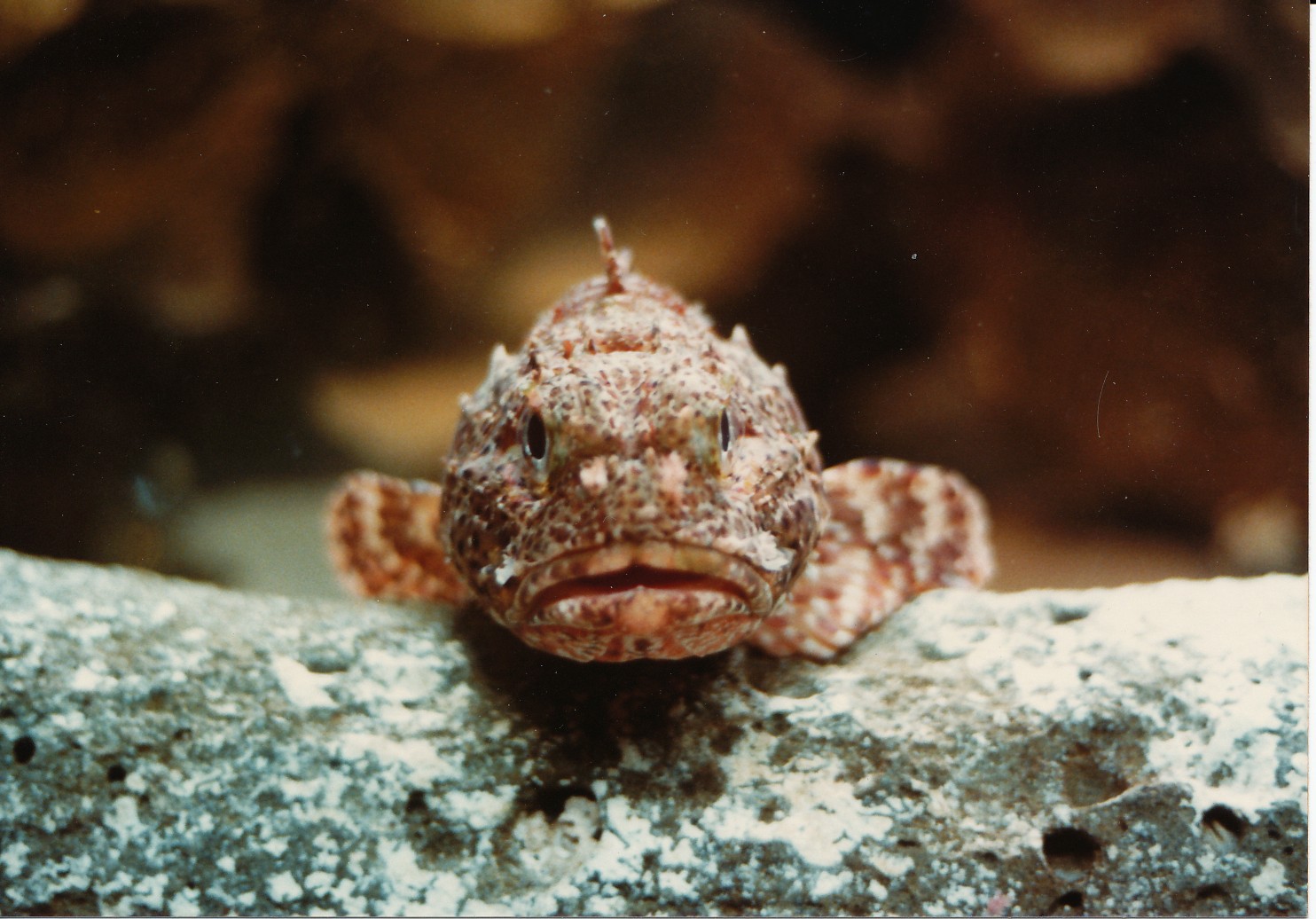
What’ch lookin’ at?
Identification: Typical rockfish shape, heavy-bodied and with strong head and fin spines. Their coloring is red (deeper water) to brown (more shallow water) with dark spotting over the body and fins. Fin spines are venomous and can cause a very painful, although not fatal, wound.
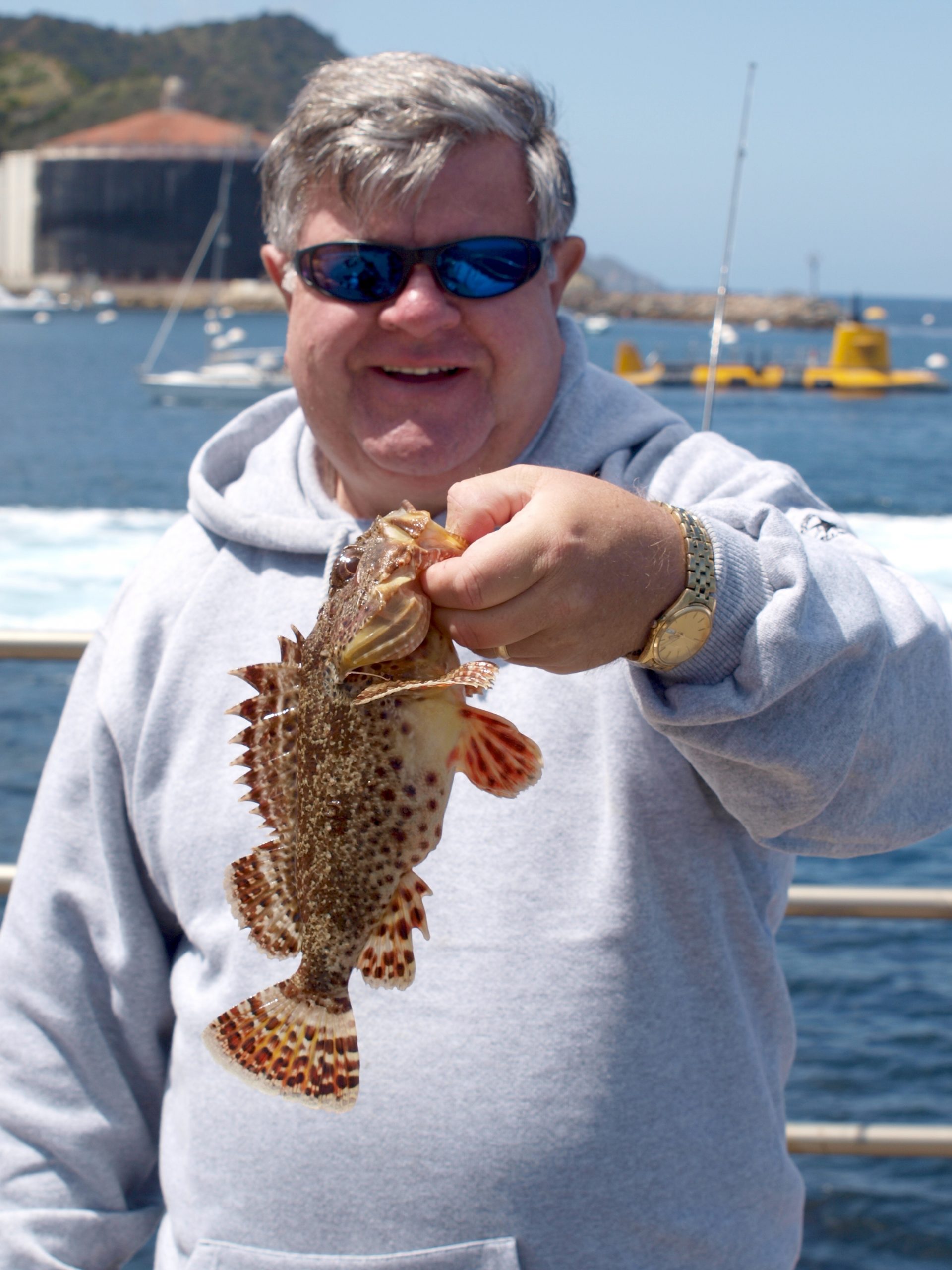
A shallow water scorpionfish I caught at the Cabrillo Mole in Avalon
Size: To 18.5 inches, although most caught from piers are less than 12 inches long. The California record fish weighed 3 Lbs. 10 oz. and was caught in the San Diego Bay on May 3, 2024. The IGFA World Record fish is listed at 4 Lbs 6 oz and taken at Cedros Island, Mexico in 2006.
Range: Uncle Sam Bank, central Baja California, and the Gulf of California, to Santa Cruz. They are uncommon north of Point Conception.
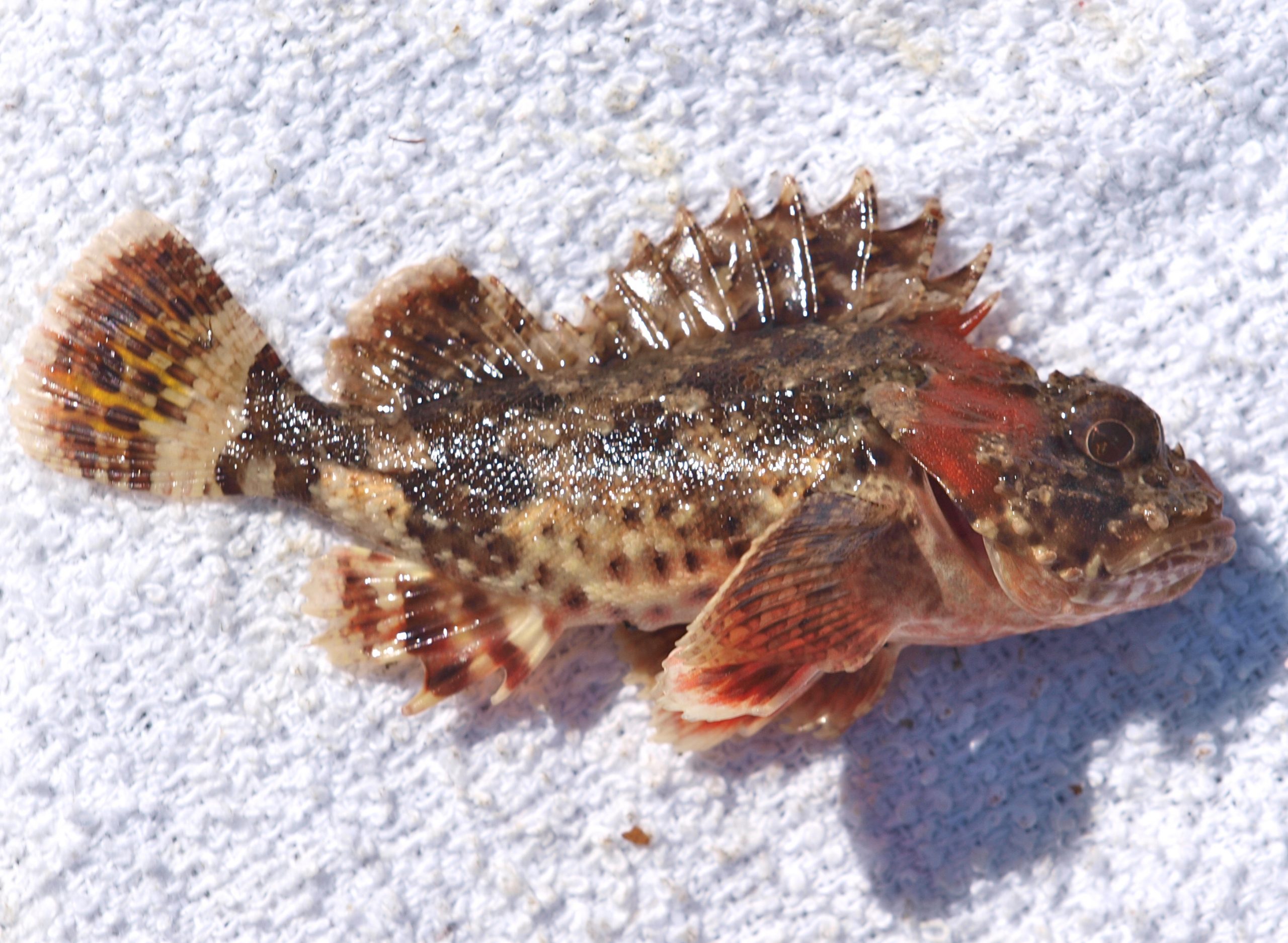
A small scorpionfish I caught one day from the Oceanside Pier
Habitat: Most abundant in shallow rocky environments such as rocky reefs, sewer pipes and wrecks; frequently found in caves and crevices. Some are also found on sand. Found in intertidal, fairly shallow water down to 626 feet. May travel over 200 miles in annual spawning migrations (spring and early summer) that see them form large spawning aggregations on or near the bottom (at a variety of depths). Considered a nocturnal species that feeds mostly at night.
Piers: Although scorpionfish are most common around rocky areas and reef areas, I have seen them caught at almost every oceanfront pier in southern California. Best bets: Balboa Pier, Newport Pier, Redondo Beach Pier, Redondo Sportfishing Pier, Hermosa Beach Pier, Santa Monica Pier, Green Pleasure Pier (Avalon) and the Cabrillo Mole (Avalon).
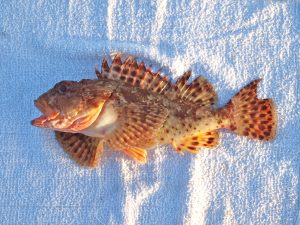
A scorpionfish from the Green Pleasure Pier in Avalon that was missing a chunk out of its tail
Shoreline: Occasionally caught by shore anglers fishing rocky areas in southern California.
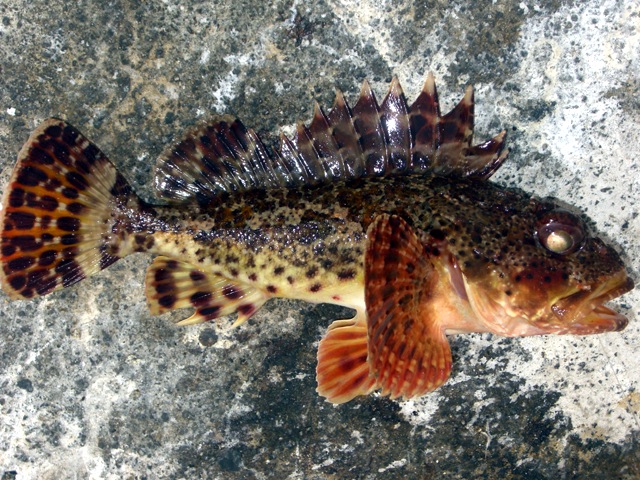
A scorpionfish caught from SoCal rocks
Boats: A common catch by boaters in southern California, especially those fishing at Catalina and the Horseshoe kelp area of Los Angeles.
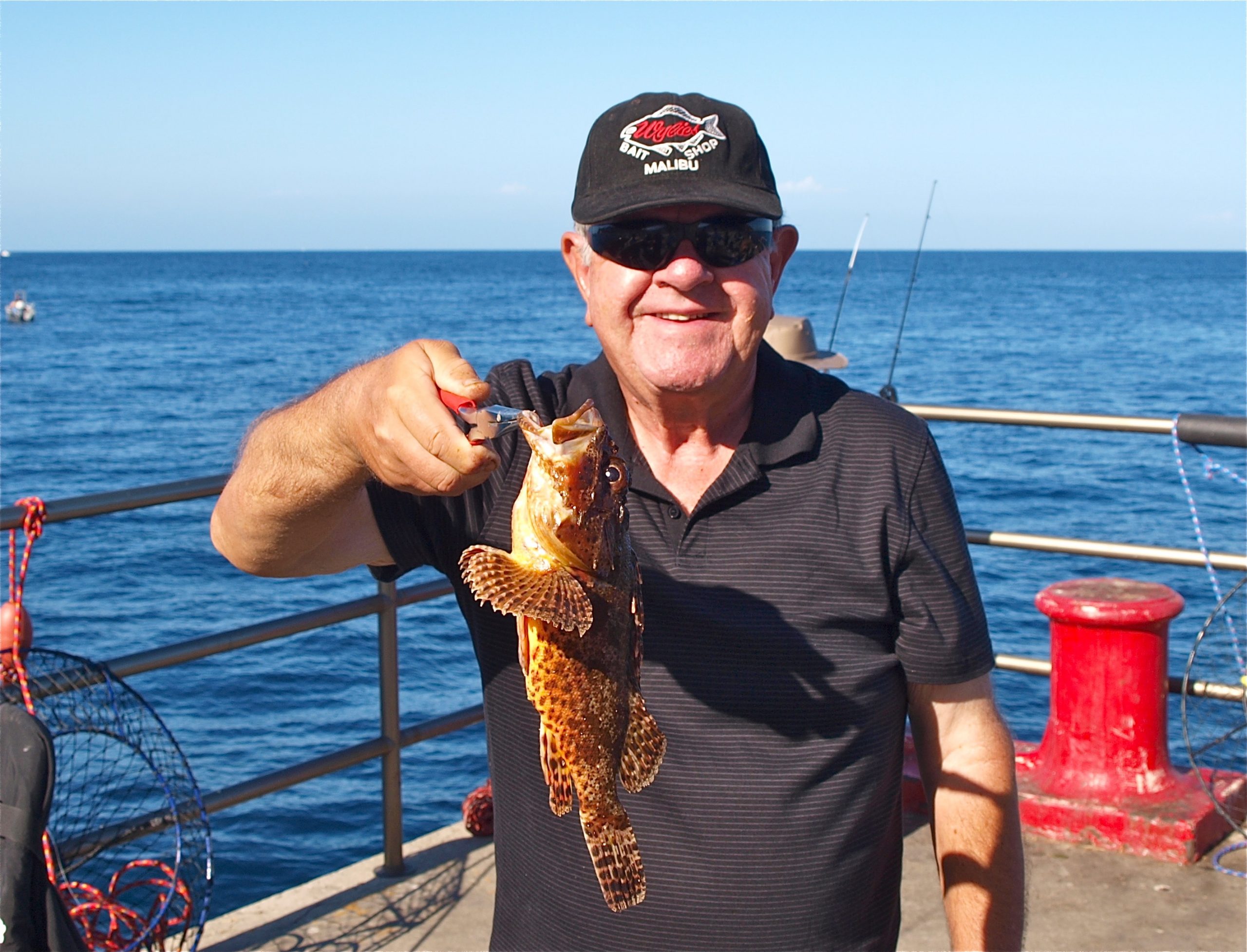
Another scorpionfish from the Cabrillo Mole in Avalon
Bait and Tackle: Scorpions are carnivorous, ambush predators that are primarily nocturnal, feeding at night. Their main diet consists of small crabs, octopus, shrimp, and small fish. A high/low leader with size 4 hooks baited with squid or shrimp seems to work best although they also really like ghost shrimp. Still, I’ve caught them on cut anchovies, strips of mackerel, pile worms, and one on a live queenfish that seemed almost as large as the scorpionfish; they’re not too discriminating as far as food.
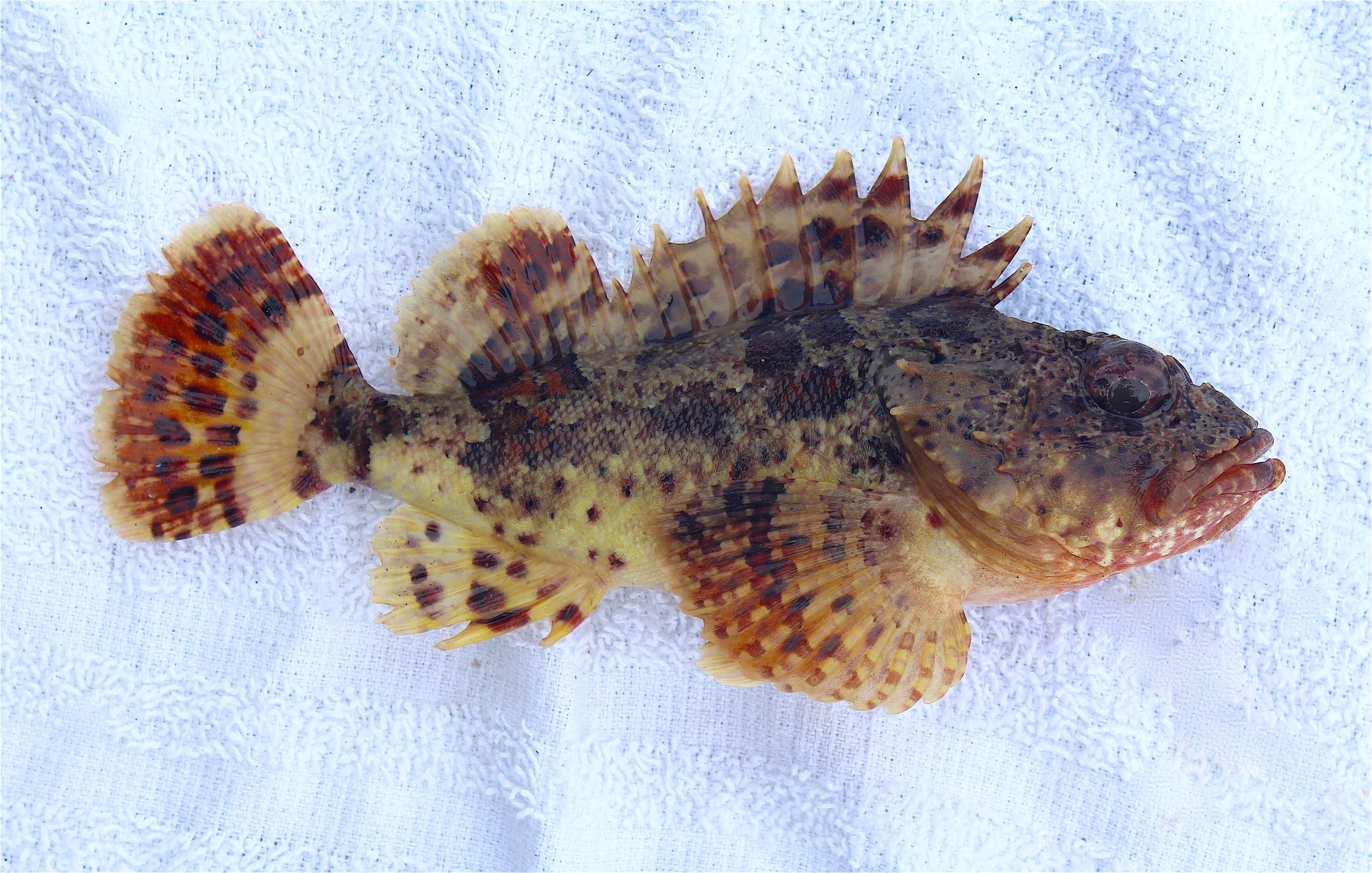
A scorpionfish I caught one day from the Ocean Beach Pier in San Diego
Food Value: An excellent eating, mild-flavored, and densly textured fish that is low in fat content. I like it fried although they are a favorite fish for sushi, and are often steamed whole; they command top prices when fresh fish are available.
Comments: Handle with extreme care. California scorpionfish are the most venomous member of the family found in California. If handled in a careless manner and a puncture wound does occur there will usually be pain (sometimes intense) and perhaps swelling that should subside after a few hours. If possible, soak the affected area in hot water as soon as practical (since the hot water alters the toxin and makes it less harmful). Multiple punctures may require doctor’s attention or even hospitalization.
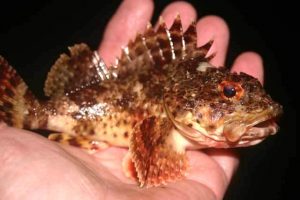
The wrong way to handle a scorpionfish — even a small one.
The worst story I ever heard of such multiple punctures concerned a middle-aged angler fishing from a boat near Catalina. This lady had caught upwards of a dozen scorpionfish that were dutifully deposited into her gunnysack. Unfortunately, many of the long spines were protruding from her bag when a heavy wave caused her to lose her footing and to fall, bottom-first, onto the bag. The result was butt-porcupine and a helicopter trip back to a hospital.
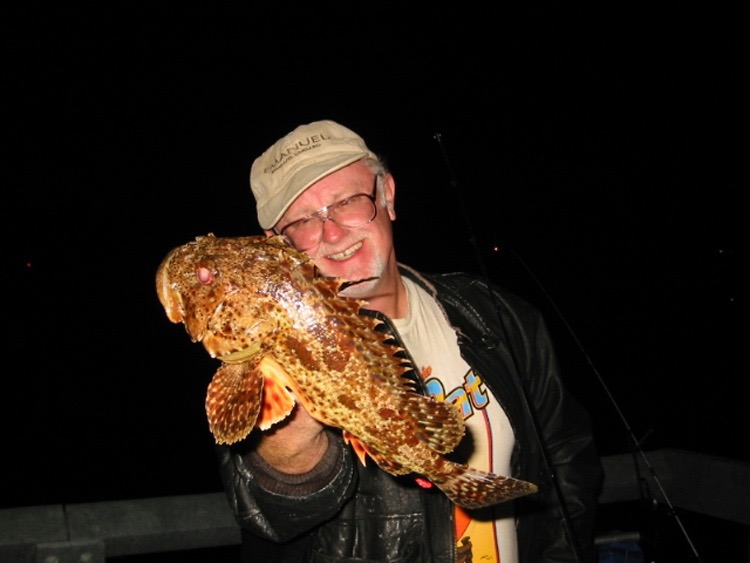
A scorpionfish caught by my buddy Boyd Grant (Pierhead) from the Green Pleasure Pier in Avalon
Although studies showed a decline in population before 1980, they seem to have increased and today have a healthy population.
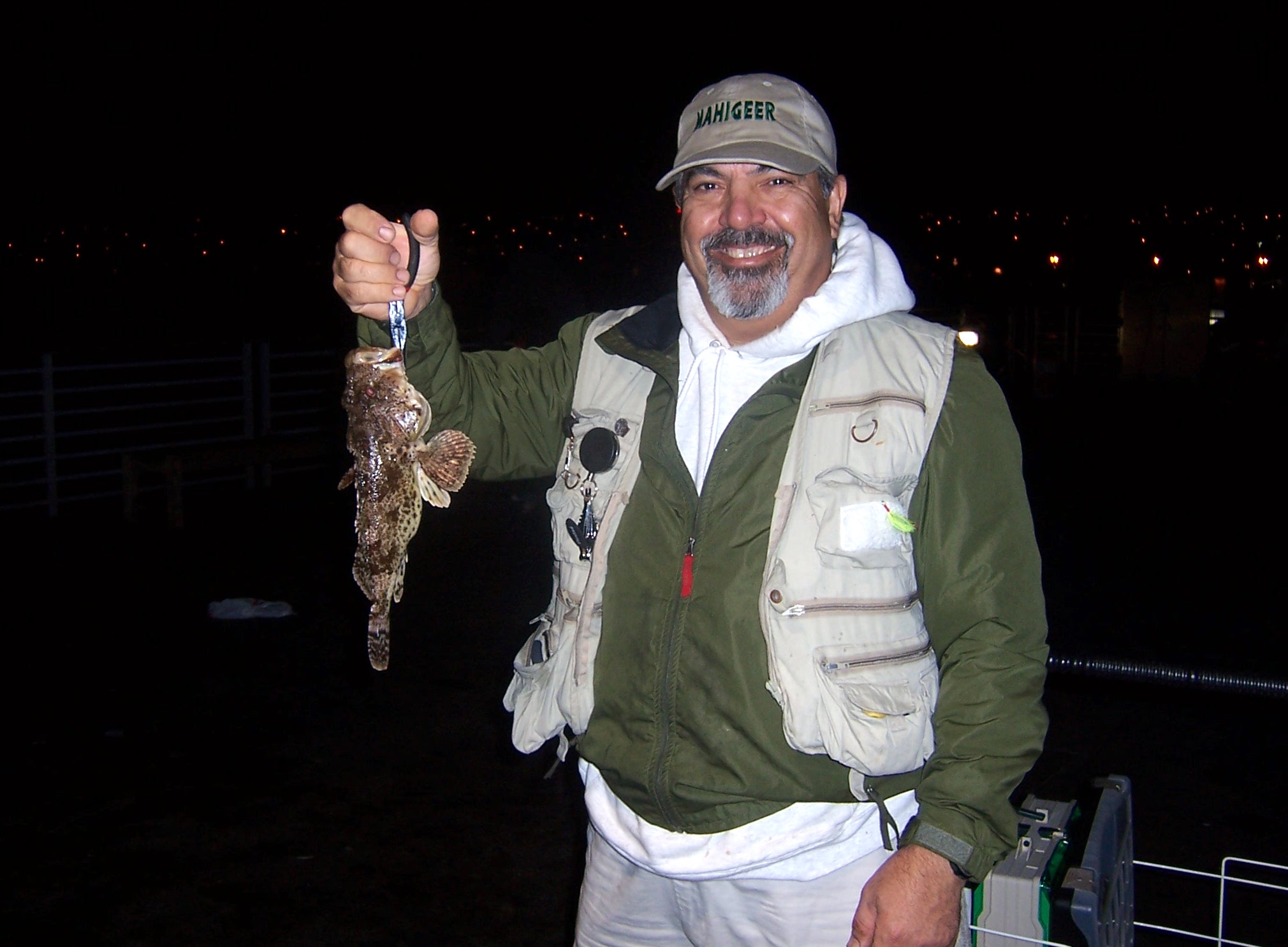
A scorpionfish taken by my friend Hashem Nahid (Mahigeer) from the Hermosa Beach Pier
A related species is the rainbow scorpionfish, Scorpaena xyris. It is uncommon in SoCal waters but occasionally seen at the Channel Islands including Catalina. Rumors of capture of the fish at the Cabrillo Mole in Avalon had occurred over the years and finally, in August 2021 a new report included a picture.
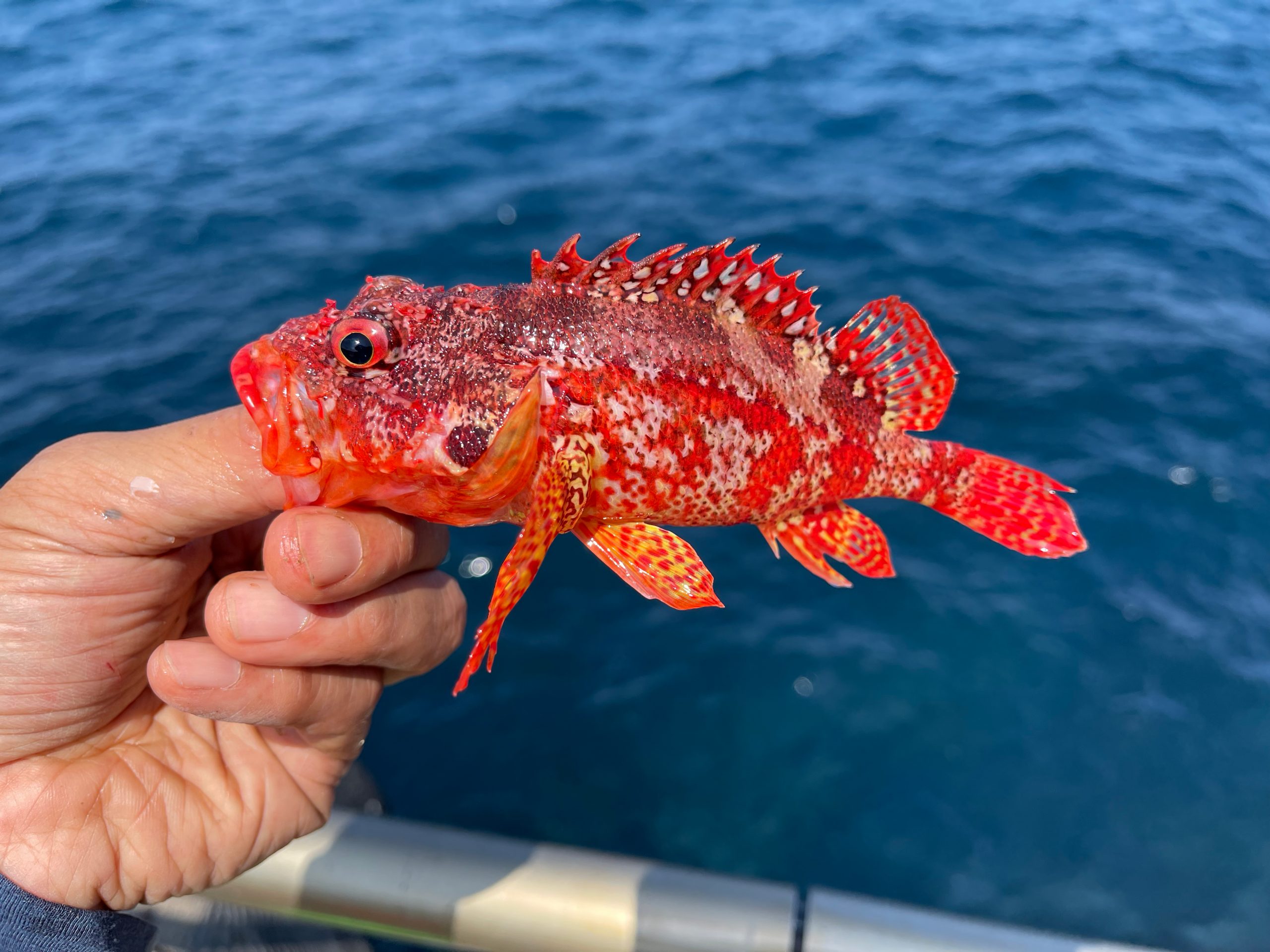
Fish caught by and photo supplied by Evan Yeh.
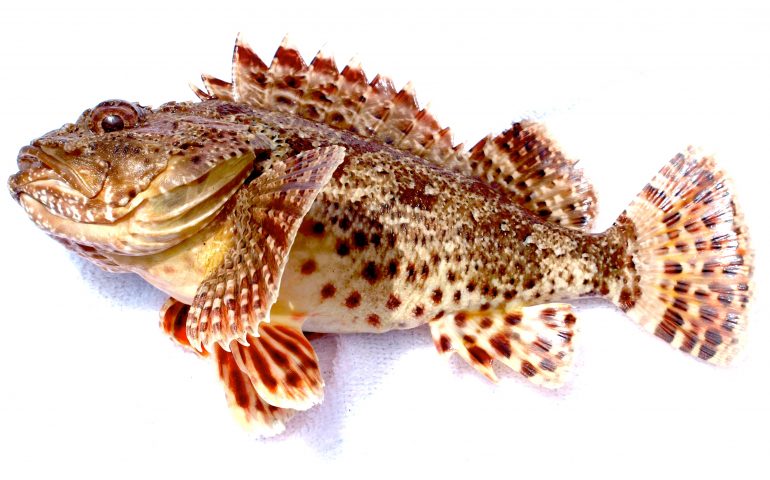
What type hook? Kahle, J or circle? What size also?
I just caught one today in San Diego on a size 4 bait holder. Drop shot with a 1oz torpedo
I have all the paper work and a catch certificate from the IGFA that shows that on 6-25-22
I caught a 3lb 10 oz sculpin and I belive that is now the new state record
Small fish, shrimp, octopuses, and crabs make up their primary diet. Although they also enjoy ghost shrimp, a high/low leader with size 4 hooks baited with squid or shrimp appears to be the most effective.
[…] current California record for this species is a 3 pound 10 ounce fish caught in San Diego Bay in May […]
Interesting post! Thanks for taking the time to share this content.
My favorite fish but tough to find
Wow, fascinating information on California Scorpionfish! I never knew they had so many different names. “Little poker” and “rattlesnake” seem a bit dramatic, considering they’re not typically deadly. The color variations depending on depth are really interesting. Makes me wonder if they have their own version of Cookie Clicker, accumulating spots instead of cookies the deeper they go! I’ll definitely be more careful around piers now, knowing those fin spines can pack a punch. Thanks for sharing these details!
I really enjoyed learning more about the California scorpionfish — the details about its habitat, behavior, and fishing tips make this a great read for anyone who loves the ocean. Having the right knowledge is just as important as having the right gear, and Gulf Coast Panana Jack offers exactly what’s needed for making the most of time spent by the water. Thanks for putting together such an informative piece!
Great write-up! Scorpionfish are fascinating but definitely intimidating. The mix of beauty, danger, and delicious flavor makes them such a unique catch.
Thank you for providing such valuable details in this post. I truly appreciate the insights and will be sure to visit your site again in the future.
Thanks for sharing this. It gave me something to think about and I appreciate how well-organized your post was.
Thanks for sharing this. It gave me something to think about and I appreciate how well-organized your post was.